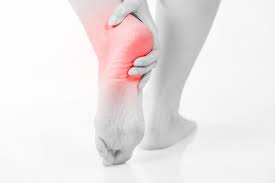General Health Tips & News
Treatment Plan of Plantar Fasciitis at Home
By A.S. (staff writer) , published on November 23, 2021

Medicine Telehealth Health Plantar Fasciitis Home Remedies
Plantar fasciitis (PF) is a common foot problem in adults. The plantar (heel) and fascia (connective tissue) is a broad band of fibrous tissue that connects the toes to the heel. When this tissue is torn, overused, or improperly stretched it can become inflamed (fasciitis).
So, basically, PF is an inflammatory process in which the tendon running from the heel to toe degenerates. You suffer from stabbing pain in which your heel as you take a couple of steps in the morning. Runners, obese females over 40 years of age, and athletes are more prone to suffer from plantar fasciitis.
Signs and Symptoms
The patient complains about the heel pain that is at its peak after prolonged rest. It may resolve after minor activity but may worsen after strenuous exercise.
Tenderness, pain, and soreness in the heel area are the most common symptoms.
Treatment Plan for Plantar Fasciitis at Home
Plantar fasciitis can be treated surgically, but it’s better to follow conservative treatment at home after the doctor’s approval. Plantar fasciitis treatment at home takes 6-18 months.
Following these tips will help improve the symptoms:
-
Rest, activity modifications, and orthotics:
It helps to keep the weight and stress off your foot, at least partially, while your plantar fascia is healing. Your doctor may recommend a combination of the following:
-
Changing to a more shock-absorbing exercise surface
-
Switching to shoes with arch support (orthotics) or trying heel cups or other orthotics to cushion the heel
-
Applying athletic tape to your foot to support muscles and ligaments
-
Lose weight: Get a balanced diet plan from a nutritionist that helps you lose weight. Being overweight is one of the causes of plantar fasciitis.
-
Icing: Icing controls the inflammation. Apply an ice pack at heel for 10-15 minutes thrice a day. An alternative to an ice pack is dipping your heel in a bucket of ice-cold water with your toes out for 10-15 minutes.
-
Non-steroidal anti-inflammatory medication: NSAIDs like ibuprofen reduces inflammation and work as pain relievers. NSAIDs-resistant cases are better managed by steroid injections.
-
Night splints: Wearing night splints stretches your foot and calf in your sleep by keeping your feet at a 90-degree angle.
-
Supportive shoes: shoes with thick soles and extra cushioning aids in walking. The second option is arch support which spreads the pressure equally across the feet. Both relieve the pain.
-
Wear Orthotic: Foot orthotics are medical devices inserted in shoes that distribute forces to provide support while walking.
-
Stretching and strengthening: Some exercises strengthen your plantar fascia by providing flexibility to your calf. The exercises stabilize and help fiber heal your ankle, which helps in relieving the pain. Stretching the Achilles tendon and heel to prevent recurrent plantar fasciitis. This is the most effective plantar fasciitis treatment at home. One way is leaning against the wall by keeping your hands and keeping one foot against the other foot.
Prevention:
Various methods can prevent plantar fasciitis. Controlling weight is one of them.
-
Abstaining from running and jumping for a more extended period.
-
Avoiding walking barefoot on a hard surface.
-
Always keep extra-cushioned footwear near your bed to not have to walk barefoot in the morning.
-
Stopping wearing high heels often
-
After exercise, make small circles with your feet and rest.
References
-
6 reasons you shouldn’t assume foot pain is a heel spur. (2015).
health.clevelandclinic.org/6-reasons-you-shouldnt-assume-foot-pain-is-a-heel-spur/ -
Ayan M, et al. (2013). Investigating the effect of aromatherapy in patients with renal colic. DOI:
10.1089/acm.2011.0941 -
Boukhatem MN, et al. (2014). Lemongrass (Cymbopogon citratus) is essential oil as a potent anti-inflammatory and antifungal drug. DOI:
10.3402/ljm.v9.25431 -
Da Silva GL, et al. (2015). Antioxidant, analgesic, and anti-inflammatory effects of lavender essential oil. DOI:
10.1590/0001-3765201520150056 -
Donley BG, et al. (2007). The efficacy of oral nonsteroidal anti-inflammatory medication (NSAID) in the treatment of plantar fasciitis: A randomized, prospective, placebo-controlled study.
DOI: 10.3113/FAI.2007.0004
Find articles related to: Medicine Telehealth Health Plantar Fasciitis Home Remedies
More articles about General Health Tips & News
Back to the Health Tips Index




